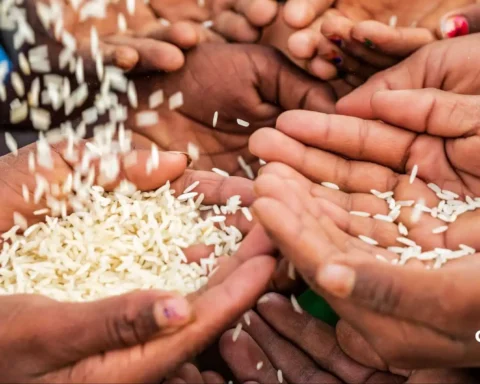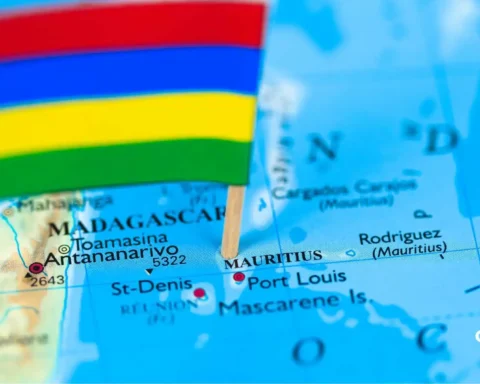Slavery and indentured laborers are synonymous, no matter how much the colonial governments try to nullify this fact. The history of Girmitiyas in Fiji is one such story of resilience, where after slavery was abolished, the system of indentured laborers was introduced where the workers were treated as, if not worse than, enslaved people.
The term “Girmitiya”, is derived from the word “Girmit”, a distorted or colloquial version of the English word “agreement”, referring to the labor contracts signed by these workers. Between 1879 and 1916, over 60,000 Indians were transported to Fiji under harsh conditions to work on sugarcane plantations. Their journey was marked by exploitation and hardship, yet they forged a distinct cultural identity and contributed significantly to Fijian society.
Table of Contents
The History of Girmitiyas in Fiji, starting from the Indenture System
The history of Girmitiyas in Fiji can be traced back to the labour shortages faced by the British colonies following the abolition of slavery under British rule in 1833. With vast agricultural estates requiring labor, particularly for sugarcane production, colonial powers turned to the indenture system. Under this system, Girmitiyas, also called Jahajis, were laborers recruited from India, primarily from Uttar Pradesh, Bihar, and Tamil Nadu, and took to indenture colonies in Fiji, South Africa, Eastern Africa, Malaysia, and the Caribbean.
Fiji, a British colony since 1874, quickly became a focal point for this explorative labor practice. The Colonial Sugar Refining Company (CSR), which held substantial influence over Fiji’s economy, demanded a constant supply of cheap labor. They were unwilling to exploit the indigenous population in fear of retaliation, so they outsourced them from British colonies.
The British administration collaborated with Indian authorities to facilitate the transportation of workers under indenture contracts that promised wages, accommodation, and eventual return to India. However, the reality was far from the assurances made during the recruitment.

The Voyage as a Test of Endurance
The journey from India to Fiji began on May 14, 1879, aboard the Leonidas, which disembarked at Levuka from Calcutta. The journey for these 498 indentured workers with Indian roots was a traumatic experience spanning three months. This ship was the first of many others that transported some 60,553 people from East and South Asia to the indentured colonies.
Transported on overcrowded ships under squalid conditions, many faced malnutrition, diseases, and psychological distress. The ships, known as “coolie ships”, lacked adequate sanitation and medical care, resulting in a high mortality rate.
The psychological toll of leaving their homeland, coupled with uncertainty about their future, weighed heavily on these laborers. Many had been deceived by unscrupulous recruiters, known as “arkatis”, who misrepresented the nature of the work and the conditions in Fiji. Upon arrival, the disillusionment of the Girmitiyas intensified as they were exposed to the grueling plantation life.
Life on the Sugarcane Plantations
The lives of Girmitiyas on the sugarcane plantations form a critical part of Fijian history. They were characterized by relentless toil, abuse, and inadequate living conditions. Their workdays often stretched from dawn to dusk, starting at 3 am, with minimal breaks and insufficient wages. The men were not paid less than a shilling, and the women were not paid less than 9 pence. Overseers subjected them to despotic punishments for failing to meet quotas, and instances of physical and verbal abuses of indenture were rampant.
Accommodation provided to the Girmitias was rudimentary, with laborers housed in overcrowded barracks known as “coolie lines”. Access to medical care and nutrition was limited, leading to high rates of illness and death. Additionally, cultural and religious practices were often undermined as the colonial administration sought to suppress Indian traditions. During that period, Fiji recorded the highest suicide rate and infanticide rate among the indentured colonies, testifying to the horrid living conditions endured by the victims.
The Aftermath and the Emergence of the Fiji Indian Identity
The Girmit system in Fiji officially ended in 1916 following mounting public outrage in the United Kingdom and British India over human rights abuses of indentured laborers, but this is not where the history of Girmitiyas in Fiji ended. While some laborers returned to India, the majority (60%) chose to remain in Fiji, having established their roots in the islands. The last shipload of laborers arrived in 1916 aboard the Sutlej V.
Their transition from indentured laborers to free citizens as native populations was fraught with challenges, including hard economic conditions and social marginalization. Despite the abuses of indenture, the Girmitiyas and their descendants made significant contributions to Fijian society. Indians in Fiji speak Fiji Hindi or ‘Fiji Baat’, which is based on the Awadhi dialect with influence from Bhojpuri and distinct from the standard Hindi spoken in India.
After the girmits expired, many Fiji Indians leased small plots of land from the Fijians and developed their own sugarcane fields or cattle farmlets. Some others went into new businesses in towns. The indenture system had put an end to the caste system and led to the development of a new koiné language, i.e. Fiji Hindi. Fiji observes Girmit Remembrance Day on May 14, paying tribute to the resilience and contributions of the Girmitiya community.
Conclusion
The history of Girmitiyas in Fiji is one of resilience, survival, and cultural endurance. Fiji Indians constituted a majority of Fiji’s population from 1956 through to the late 1980s. From the dehumanizing conditions of indenture to their eventual triumph as free citizens, their legacy is a testament to the human spirit’s capacity to endure and overcome during the tyrannical colonial period.
The indenture agreement made the emigrants believe that Fiji was close to India and promised a five-year contract only, along with good living conditions, relatively high wages, and an optional free return passage to India after an indenture period of 10 years; all of this far from the truth. While the scars of the past remain, the contributions of the Girmitiyas have indelibly shaped Fiji’s identity. Remembering their journey not only honors their sacrifices but also serves as a powerful reminder of the need for justice and dignity for all.

FAQs
What is the story of the Girmitiyas?
The Girmitiyas are the thousands of indentured laborers who were brought to Fiji between 1879 and 1916 under harsh contracts to work in sugarcane plantations, enduring exploitation, poor living conditions, and cultural suppression.
Where did the Indians in Fiji come from?
The Indians in Fiji primarily came from the regions of Uttar Pradesh, Bihar, Punjab, and Tamil Nadu in India. They were brought as indentured laborers under the British colonial system from the late 19th century.
Why is Girmit Day celebrated in Fiji?
Girmit Day is celebrated in Fiji on May 14 to commemorate the arrival of the first Indian indentured laborers, known as Girmitiyas, who were brought to the country under the colonial indenture system starting from May 14, 1879. It serves as a tribute to their resilience and preservation of their cultural heritage despite the hardships they endured.









